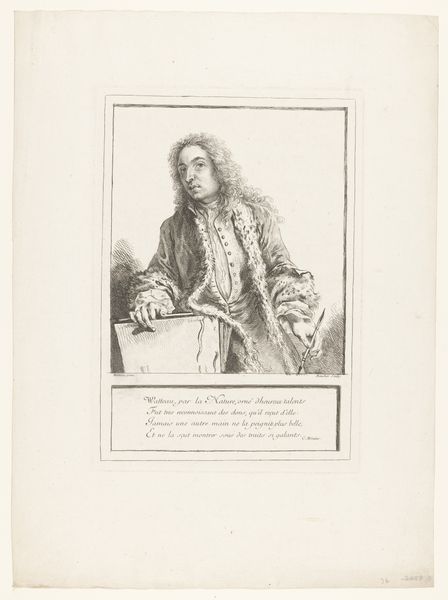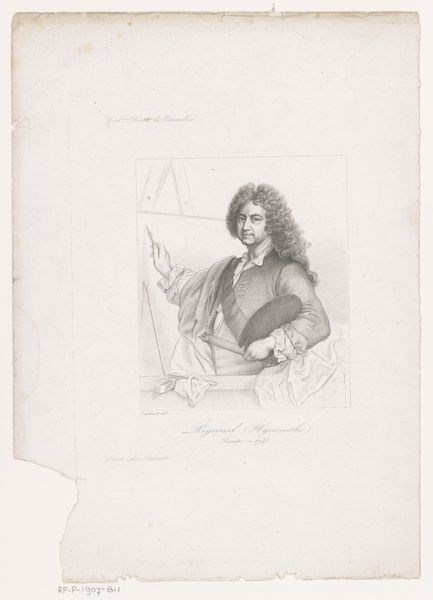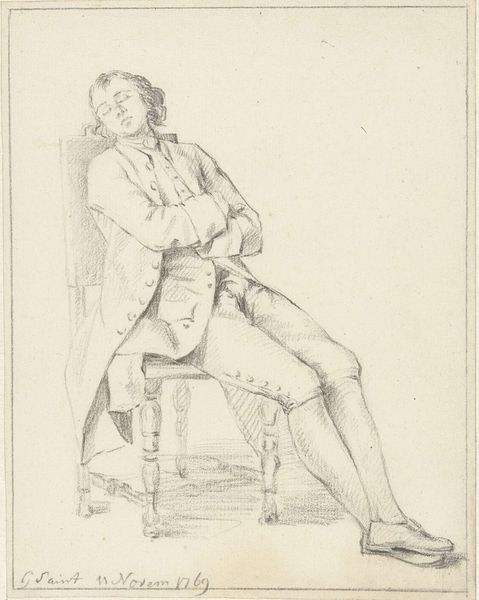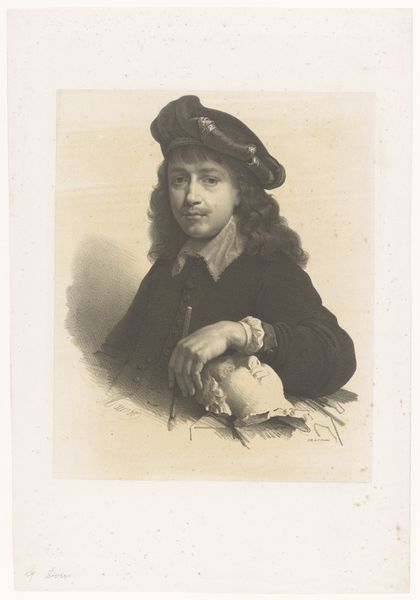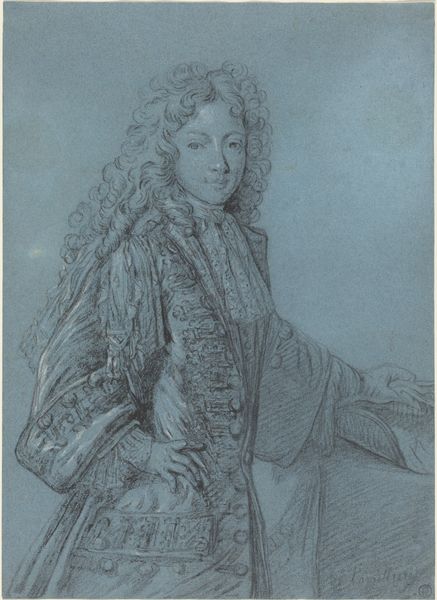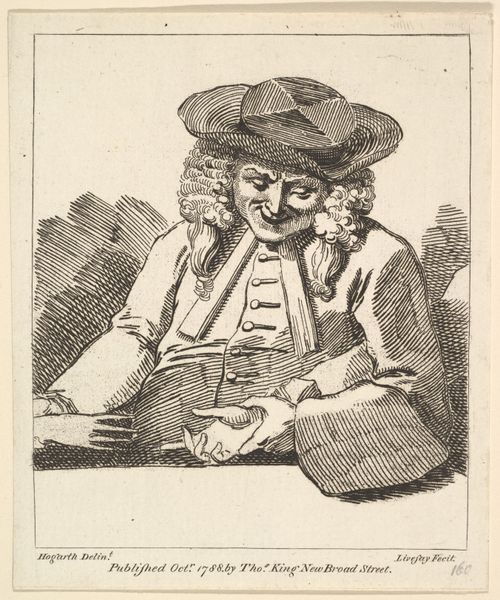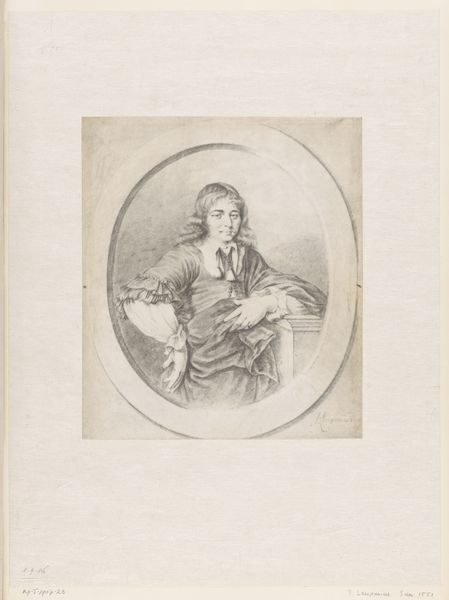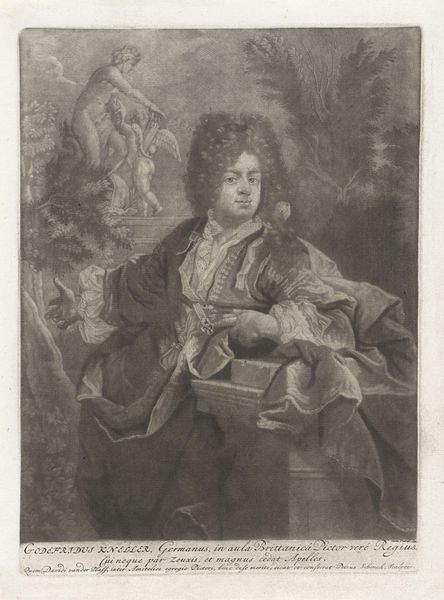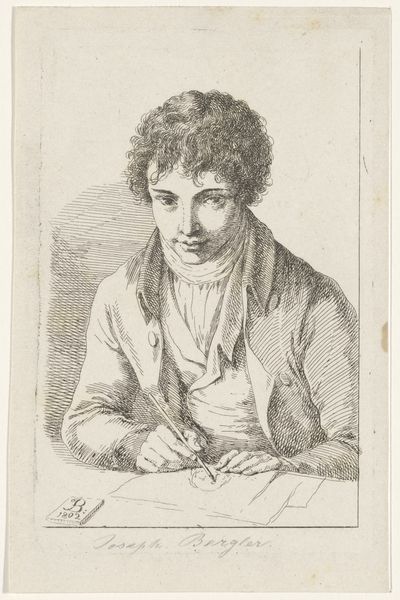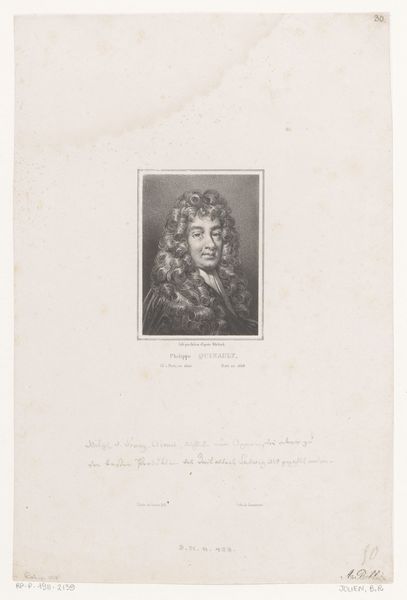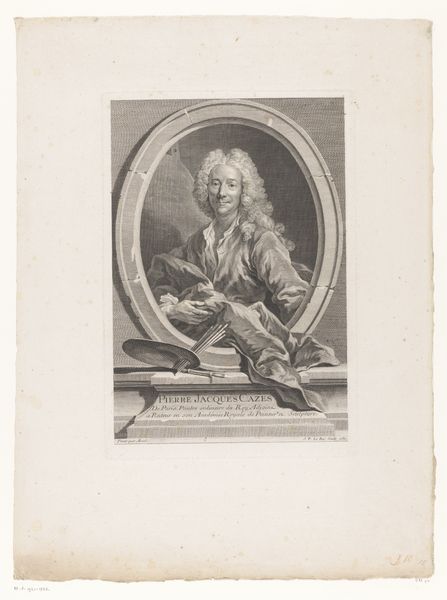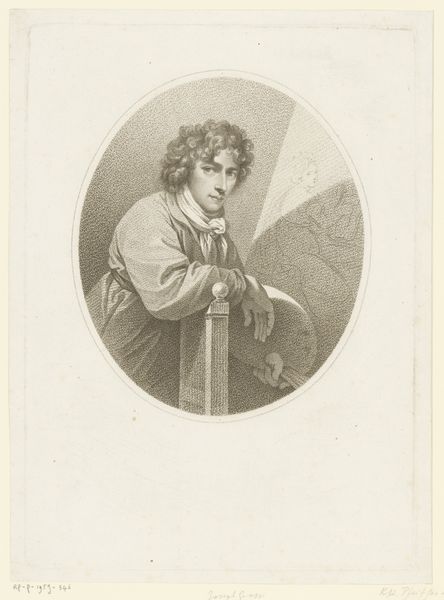
etching, engraving
#
portrait
#
neoclacissism
#
etching
#
figuration
#
pencil drawing
#
line
#
portrait drawing
#
engraving
Dimensions: height 256 mm, width 176 mm
Copyright: Rijks Museum: Open Domain
Curator: Up next, we have a delicate etching: “Portret van Johann Heinrich Ramberg.” It dates to the late 18th or early 19th century. Editor: The first thing that strikes me is the intimate quality of this work. It feels as though we've caught Ramberg in a very personal, contemplative moment. Curator: Precisely. Its Neoclassical lines and use of engraving speak volumes about the period's desire to emulate classical restraint. Yet, the way light dances across his face suggests a psychological depth beyond mere surface representation. He's posed leaning on what appears to be his painter's palette. This hints at Ramberg's profession. What is revealed? Editor: Looking closer at the context of Ramberg's era is important. Neoclassicism can easily be read through the lens of empire and colonialism. Did Ramberg challenge or contribute to those structures? What role did he play within those visual hierarchies, given his status and positioning? We must think about who is missing here and whether the symbolism serves certain dominant interests. Curator: A valid consideration. His palette becomes almost like an emblem of his identity, suggesting artistic inspiration or even genius. Symbols can be loaded with meaning; sometimes revealing power dynamics. The gaze directs attention—his curly hair seems intentionally composed. Editor: And it’s interesting to analyze his gaze, isn't it? It's averted, thoughtful. Considering what the artwork presents or suppresses allows room to delve into art production’s power imbalances. Does this suggest introspective brilliance? Curator: The ambiguity contributes, I believe, to its enduring appeal. Symbols do not remain fixed. They live on, and they undergo transformations through our own associations. We all come to see things differently depending on how we’re raised and what experiences form our lens. Editor: Understanding how historical factors play into interpreting art gives us power, perhaps even emboldens action that is transformative. By deconstructing dominant visual narratives that may seem harmless and by analyzing what is left outside frames, it sparks important questions and pushes us to think about society more critically. Curator: It is exciting to see what new facets each viewer finds here!
Comments
No comments
Be the first to comment and join the conversation on the ultimate creative platform.
